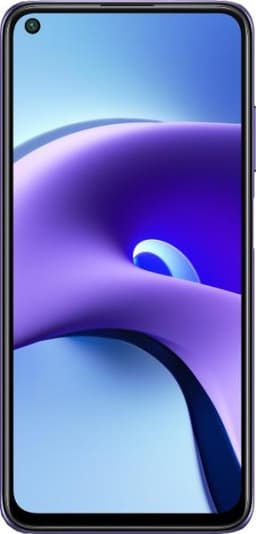- Archive
- Xiaomi Redmi Note 9T vs Xiaomi Redmi Note 11 Pro+
Xiaomi Redmi Note 9TvsXiaomi Redmi Note 11 Pro+
We compare these two popular phones to help you decide which one fits your needs and budget better.

Quick Stats

Quick Stats
Note: Highlighted specifications show differences between the two devices.
| Metric | Xiaomi Redmi Note 9T | Xiaomi Redmi Note 11 Pro+ |
|---|---|---|
| Connectivity | #370 | #36 Winner |
| Design | #719 | #713 Winner |
| Display | #745 | #202 Winner |
| Performance | #634 | #421 Winner |
| Battery | #675 | #515 Winner |
| Camera | #461 | #124 Winner |
Note: Lower rank number indicates a better position in category.
No significant specification differences found between these devices.
Xiaomi Redmi Note 9T
Strengths
Weaknesses
Xiaomi Redmi Note 11 Pro+
Strengths
Weaknesses
Xiaomi Redmi Note 9T
The Xiaomi Redmi Note 9T is one of the cheapest 5G phones available in the market. Despite being budget-friendly, the device has a sturdy build quality with a plastic back and frame that feels rigid and durable. The phone also features a water-repellent coating and Gorilla Glass 5 on its screen. The Redmi Note 9T's design is not overly impressive, with thick bezels and a noticeable punch hole. However, the device comes in two color options - Nightfall Black and Daybreak Purple - which have a textured finish that provides extra grip and prevents smudges. One of the notable features of the phone is its performance. Powered by the Mediatek Dimensity 800U 5G chip, the Redmi Note 9T delivers smooth performance and can handle demanding tasks with ease. The device also has a triple camera setup, which includes a 48MP primary sensor, 2MP macro sensor, and 2MP depth sensor. The cameras on the Redmi Note 9T are capable of capturing good-quality photos in daylight conditions, with plenty of resolved detail and warm colors. However, low-light performance is average, and noise reduction can be overdone at times. The selfie camera is a highlight, delivering sharp and detailed shots even in lower lighting conditions. Battery life on the Redmi Note 9T is excellent, lasting for more than a day with moderate usage. However, charging speed is limited to 18W, which can take some time to fully charge the device. Overall, the Redmi Note 9T is a solid option for those who want a budget-friendly 5G phone, but it may not be the best value if you're willing to spend a bit more money on other devices with similar features.
Xiaomi Redmi Note 11 Pro+
The Xiaomi Redmi Note 11 Pro+ is a mid-range device that brings two distinct models: one with a 4G chipset and the other with a 5G capable one. Despite their differences in chipsets, both devices share an identical look and feel, along with nearly the same specs. The phone's design features a flat glass back and plastic frame with a matte metallic finish, making it sleek and minimalistic. The IP53-rated dust and splashproofing is a premium feature that returns from last year. Both devices have a 6.67-inch AMOLED display with a 1080p resolution, Gorilla Glass 5 protection, and a fast 120Hz refresh rate. The Redmi Note 11 Pro+ has a 108MP main camera, an 8MP ultrawide lens, a 2MP macro cam, and a depth sensor. While the camera performance is decent for its class, it lacks HDR10 support and 4K video recording, which was available on last year's model. In terms of performance, the Redmi Note 11 Pro+ has a MediaTek Helio G96 chipset, which is less powerful than the one in the 5G version. As a result, the battery life is also not as long-lasting, with a 100-hour endurance compared to the 5G model's 150 hours. The phone's cameras produce good results, especially in low-light conditions and portrait mode. However, the ultrawide camera struggles with dynamic range and noise reduction. Selfies from the 16MP front camera are also decent but lack resolved detail. Overall, while the Redmi Note 11 Pro+ has some standout features like its AMOLED display and fast charging, it falls short of last year's model in terms of performance and camera capabilities. Its price is also not competitive with other devices on the market, making it a less desirable option for those seeking value.
Need help choosing?
Read our detailed reviews to understand which device is better for your specific needs and budget.
Compare other phones
Explore comparisons between any other phones
Choose two different items to see a detailed comparison of their specifications, performance, and features